VOLUME XV, ISSUE VI

GROWING
BEYOND BOUNDARIES read it on page 19

VOLUME XV, ISSUE VI

BEYOND BOUNDARIES read it on page 19
Carlmont Journalism is a nationally renowned media arts program run by the students of Carlmont High School. Our staff works to deliver the latest news to our student body, their families, and the community. We are committed to delivering information, current events, and thought-provoking ideas to our audience through storytelling. In our magazine, you will find the passions of writing, intricacies of design, and action of photography all on one page. We hope that the Highlander helps you engage with information in a new way and broaden your perspective on local topics. Keep it on a shelf, in your bag, or under the bed for years to come—our magazine is timeless.
HIGHLANDER EDITOR-IN-CHIEF
Lucille Sanders
HIGHLANDER MANAGING EDITORS
Clementine Cunningham
Inaaya Omer
HIGHLANDER EDITORS
Rei Baxter
Serenity Corbett-Richardson
Samantha Crowther
Elaine Jiang
Kara Kim
Alice Lan
Sienna Reinders
Daniella Smit
Isabella Zarzar
Katherine Zhang
SCOT SCOOP EDITOR-IN-CHIEF
Gabrielle Shore
SCOT CENTER EDITOR-IN-CHIEF
Sydney Tao
SOCIAL MEDIA EDITOR-IN-CHIEF
Piper Diehn
FACULTY ADVISER
Justin Raisner
Welcome to our final issue of Highlander! Looking back on our high school careers, there may be things we would have done differently, people we wish we didn’t meet, and tests we should have studied harder for. But as we, we will carry the weight of many memories — good and bad — which have made us better versions of ourselves.
Over the past four years, we have discovered what makes up a community: a place or person we can call home, a chance to gain new perspectives, and most importantly, a medium through which we can tell stories.
STAFF
Kian Bhatt
Audrey Burnley
Hailee Byun
Alexandra Chan
Elizabeth Cruz
Piper Diehn
Audrey Finigan
Emma Goldman
Myles Hu
Nicholas Lee
Alexander Menchtchikov
Shiyo Ohashi
Stella Pavao
Adelaide Reinshagen
Ben Romanowsky
Masha Rozenfeld
Jasneh Sasan
Sophia Schreiber
Abigail Sinarle
Aimee Teyssier
Emma Yin
Arianna Zhu
We love to tell stories here in journalism class — that’s how we have shaped our community. Stories turn statistics into people, transform the way we understand our surroundings, and allow us to be vulnerable. Even though our journalism seniors will be moving on, we can confidently say they will be looking for stories to learn from everywhere they go. You never know how a single conversation might change you.
As you flip through our last issue surrounding physical and emotional growth, alternative lifestyles, and urban innovation, we hope you take away the fact that life is constantly evolving. Our stories aren’t over yet.
Warmly,




In partnership with the Dutch consulate, 80,000 tulips covered San Francisco's Union Square for annual Tulip Day. A lady crouches down to pick from a collection of red tulips. She adds one to her paper bag filled with other colored tulips. Provided by the volunteers, the paper bags are used by visitors in order to preserve the tulip bulbs for replanting. Photos by Audrey Burnley

Walking alone through a vast array of tulips, a girl looks for the one she might want to pick. For International Women's Day, anyone had the chance to pick eight free tulips.

Volunteers sported in the country's famous orange color and made sure that everyone was able to collect tulips. With 40,000 people lining the streets of Union Square, these volunteers had their work cut out for them.



The student section watches in anticipation and excitement as the game unfolds, with students decked out in blue and Scots gear for the “Bleed Blue” theme. Their vibrant display of school pride made for an unforgettable experience.
Seniors scream and cheer at the top of their lungs, celebrating the senior class homecoming float. They ran along the track after breaking out of the float. Their theme was “Senior’s Last Rodeo,” which was a creative title to commemorate their last homecoming game. Photos by Sophia Schreiber


The cheer team brings surprise guests out for their halftime performance: “Mini Monty’s,” a group of young cheerleaders from the community. Third grader Cecile Rotner shared her enthusiasm. “I like flying and doing the cheers a lot," Rotner said.


Freshman Paige Rouspil highfives her teammate as the first varsity flag football game begins. Carlmont triumphed in a 27-0 victory against the Aragon Dons in early September. Due to it being their first official game, several members of the team faced initial anxiety. However, as the game unfolded, a wave of excitement swept through the players, which was reflected in their impressive win.

Jazzlin Yee smiles at Sadie, a black lab, during the Dogs in the Quad event. Despite being local residents’ personal dogs, they must get certified and pass many tests before they can become therapy dogs. “The dogs were very cute and it was a great way to destress before finals,” Yee said.


Senior outfielder Brian Cooke slides into second base to get his second stolen base of the season on March 15 against Sacred Heart Prep. Cooke ran the bases in place of senior catcher Kaden Healy, who hit a single. “I know that if I’m not first to the base, I’m out, so it really comes down to speed and I usually win that battle,” Cooke said. Photos by Alexander Menchtchikov

Senior catcher Kaden Healy catches pitches from senior Benjamin Sunahara prior to a defensive inning on March 15. Healy has been on Carlmont’s varsity baseball team since his sophomore year, initially as a first baseman, but has transitioned into the catcher role since.

Junior third baseman Henry Massey watches as senior Adam Bailey pitches the ball on March 15. Bailey pitched five innings and struck out five batters before being replaced by senior Benjamin Sunahara for the final two innings. Massey led the Scots in batting average and on base percentage last year as a sophomore and will continue to be a crucial player for Carlmont for the rest of 2024 and beyond.

In a world where meat and dairy consumption is deeply ingrained in cultural norms, the decision to switch to a vegetarian or vegan diet may lead to better health but also to unwanted judgments.
People choose vegetarianism for various reasons, including cultural, health-related, or environmental concerns.
“I was raised vegetarian, and I do not know anything different. My whole family is vegetarian because it is a tradition in some Indian cultures,” said Anuja Kamatkar, a junior at Carlmont High School
Vegetarianism brings many health and environmental benefits. According to the National Institute of Health, a plant-based diet can reduce the risk of diseases such as cancer, diabetes, dementia, and hypertension.
“Provided they are eating a healthy vegetarian diet (not just soda and white bread, which are both vegan), this comes with many health benefits,
particularly in terms of chronic disease prevention and treatment (diabetes, overweight, heart disease, cancer),” said Christopher Gardner, a professor of medicine and a nutritional scientist at Stanford University.
Moreover, there are significant environmental benefits to choosing a plant-based diet. According to a study by the Consultative Group on International Agricultural Research, livestock alone accounts for more than 14% of global greenhouse gas emissions, so cutting out meat consumption would greatly benefit the environment.
Additionally, changing dietary habits could save $1 trillion annually by preventing healthcare costs and lost productivity. This number increases to as much as $30 trillion annually if you consider the economic value of lost life.
However, stepping outside of social norms often invites misconceptions and judgment. For example, according to the research journal Sex Roles, a study has shown that men are fighting gender

stereotypes when it comes to plantbased diets. Vegan and vegetarian men are perceived as less masculine, leading to social challenges.
“Common misconceptions of vegetarians are that they do not get enough protein and there is not much variety in the types of food they can eat, both of which are false,” Gardner said.
A common challenge for vegetarians is coming to a restaurant and needing vegetarian-friendly options. Asha Mehta is a junior at Carlmont High School who upholds a vegetarian diet. Sometimes, finding a good vegetarian meal in restaurants can be difficult, but some of Mehta’s favorite local vegetarianfriendly restaurants are Spoon and Fork, Charm Thai Eatery, and Shizen.
“All of these places provide a wide variety of vegetarian options, which is nice because at many places, there are only a few things that I can eat on the menu,” Mehta said.
A Spoon and Fork server pours sweet and sour sauce into a dipping tray before bringing the plate of egg rolls out to the customer. Upon request, many of their stir-fried noodles, fried rice, and curries can be made vegetarian. Photos by Alexandra Chan



Shizen is a fully plant-based restaurant in San Fransisco that serves sushi and other dishes, such as ramen and unique desserts. One of their desserts of the day was a blueberry cheesecake garnished with a berry sauce, strawberries, edible flowers, and microgreens.
Shizen tries to give customers a vegan sushi experience. Their candlestick roll comes with spicy tofu and cucumber on the inside, along with avocado and seaweed pearls on top.
According to a Japanese food blog called Just One Cookbook, a traditionally prepared Yakisoba is a stir-fried noodle dish cooked in a thick, sweet, and savory sauce with vegetables and slices of pork belly. At Shizen, Yakisoba includes thick, chewy noodles mixed with shiitake mushrooms, onions, cabbage, carrots, tofu, scallions, and pickled ginger.
Every Sunday, countless Bay Area residents can start their day at various farmers markets across the peninsula in an effort to bring home an assortment of goods, but these markets provide more for the community than just delicious produce. These farmer’s markets foster environmental sustainability in the local community.
Farmers markets have progressively become more popular in recent years. As the global climate crisis worsens, many people are taking steps to be more sustainable, and farmer’s markets are a great way to do what they can. These markets provide a more sustainable alternative to traditional grocery stores due to a multitude of factors.
One such reason is the distance that these vendors are traveling. Often, especially in commercial grocery stores, produce needs to go a long way to reach its destination, contributing to a significant carbon footprint. According to the Farmers Market Coalition (FMC), locally sourced produce travels 27 times less than conventionally sourced produce.
In addition, farmers market products tend to be produced more sustainably and with better ingredients and care. According to the FMC, approximately half of the vendors at farmers markets sell organically labeled products, and many more sell chemical or pesticide-free labeled products. And, with less travel time, fewer preservatives and genetically modified organisms (GMOs) are needed to preserve the food for the journey.
Harjap Kaur is the owner of Harji Naturals, a company focused on creating sustainable self-care products that can be found at the Belmont Farmers Market every Sunday morning. Kaur is one of many farmers market vendors that pride themselves on the use of all-natural ingredients.
“I want to reach out to local customers and


“A

 HAILEE BYUN
Tim Haas, a vendor for Bay Area Bees, takes a customer’s change after selling them a honey stick.
friend of mine from church introduced me to the world of bees,” Haas said. “He dropped off two hives at my house, and now I’m all about saving the bees.”
Citaly Guevara, a worker for Jacob’s Farm, smiles as she helps a customer bag his produce. “My coworker can only speak Spanish, so it’s fun to see the two languages of Spanish and English come together as she interacts with customers,” said Mal Covarrubias, Guevara’s colleague.
HAILEE BYUN
Tim Haas, a vendor for Bay Area Bees, takes a customer’s change after selling them a honey stick.
friend of mine from church introduced me to the world of bees,” Haas said. “He dropped off two hives at my house, and now I’m all about saving the bees.”
Citaly Guevara, a worker for Jacob’s Farm, smiles as she helps a customer bag his produce. “My coworker can only speak Spanish, so it’s fun to see the two languages of Spanish and English come together as she interacts with customers,” said Mal Covarrubias, Guevara’s colleague.

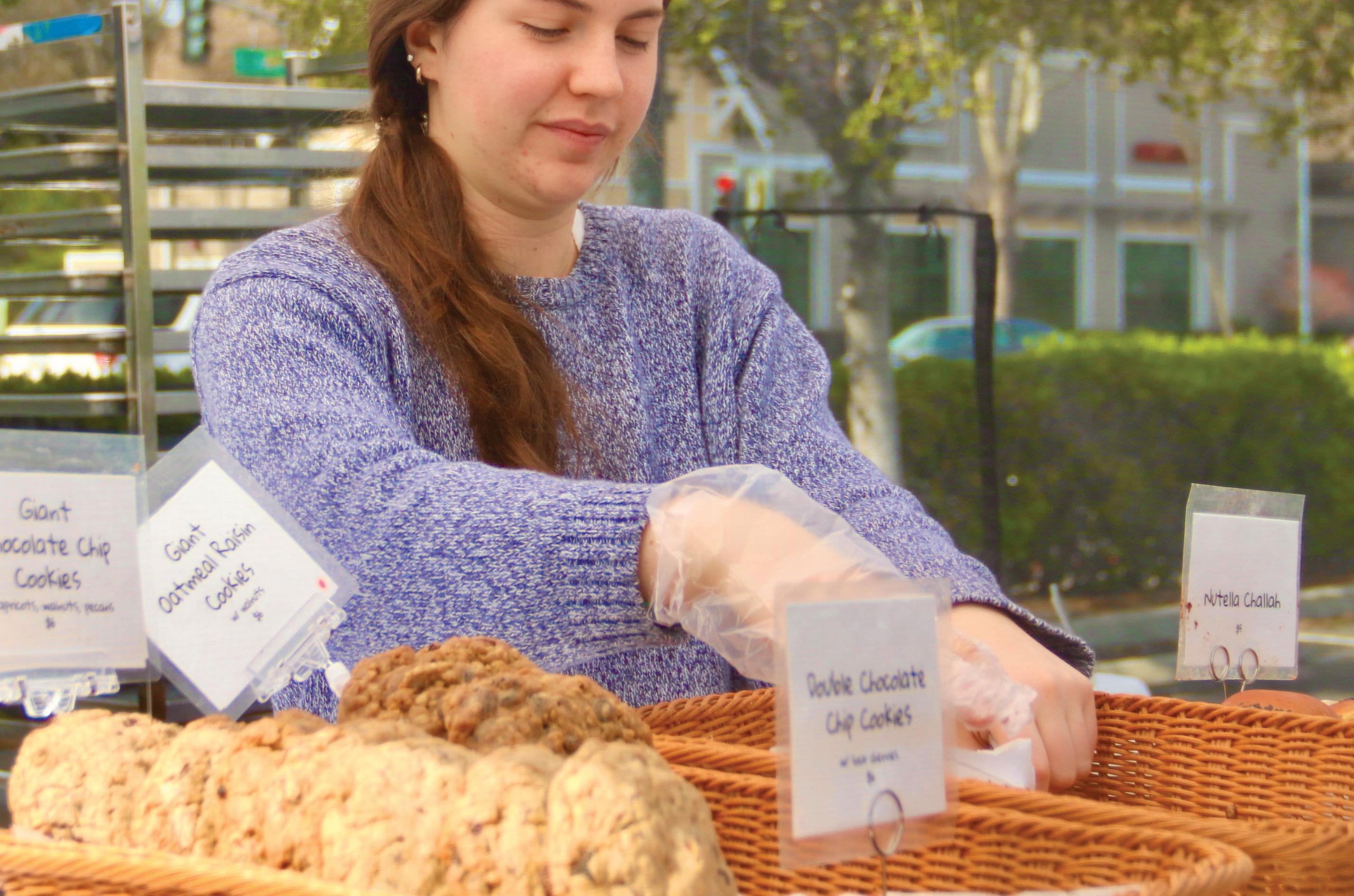
create an opportunity so people who care to buy fresh organic local produce could also enjoy local organic bath and body products,” Kaur said.
Another major issue for the environment is the amount of waste, including plastic, that the grocery uses for packaging. According to Columbia Climate School, farmers markets use less plastic waste. Most items aren’t packaged, and if they are, it is generally minimal.
Vendors like Kaur who still utilize packaging approached it with more sustainable materials.
“We use paper packaging, which is zero waste, for soaps and even recycled paper bags to give products to customers. Bar soaps by themselves are eco-friendly and don't contain harmful chemicals. Apart from soaps, I sell oils and deodorants. I use plastic containers for those but offer refills at discounted prices to encourage reuse,” Kaur said.
Another positive implication of farmers markets is that they allow smaller farmers to focus on selling sustainably without the pressure of competing with
corporate farms.
According to Columbia Climate School, mono-crop farms are becoming increasingly common for large farms growing for the grocery store. Monocropping is when a large section of land is only utilized for the growth of one crop, taking a toll on the ecology of the land because of heavy fertilizer use and lack of crop rotation. On the other hand, smaller farms such as those that sell at farmers markets take better care of nurturing their land, instead using protective measures.
Bill Ferry is the owner of Bill Ferry Ranches and another vendor at the Belmont Farmers Market. He implements several measures at his farm to foster sustainability.
“We use integrated pest management. We don't spray for cosmetic purposes only for insects and nematodes that will destroy the crop or the trees. So we use biological control for snails; we release snails and also we use a product called Checkmate, which lowers the pheromones disrupting the mating of California Red Scale insects,”
Ferry said.
Ava Johnson, a worker for Little Sky Bakery, arranges cookies in a neat row. “The atmosphere is very nice and peaceful, especially when there’s music playing,” Johnson said. “It’s also nice talking to people and getting free bread if it’s left over.”
Many avid consumers at the farmers market recognize the more sustainable aspects that make it all the better.
Annika Snow is a frequenter of the San Carlos farmers market.
“My family likes to go to the farmers market because there’s a lot of stuff that you wouldn’t be able to find in a grocery store like super fresh produce or handmade items, and we want to do what we can for the environment, even if it's the small things,” Snow said.
According to the FMC, four out of five farming vendors discuss their practices with customers, educating them about farming and its interactions with the natural environment.
The farmers market not only allows environmental sustainability to flourish but also guides the community to learn more about what they are buying, something that is vital as the climate crisis heightens.
“By going to the farmers market, you're helping small growers and family farmers, and leaning into a more sustainable lifestyle,” Ferry said.

When summer approaches, the days get longer, and the weather gets warmer, allowing everyone to indulge in more activities in light of the season. In addition to the higher temperatures that will encourage residents to participate in more activities outside, many large events are scheduled during the summer season.
In the Bay Area, music festivals such as BottleRock and Outside Lands are located nearby and attract hundreds of thousands of concert-goers every summer. In 2024, artists Stevie Nicks, Pearl Jam, and Ed Sheeran will be some headlining performances at BottleRock.
will be brought to town again from June 1 to June 9, along with the recurring music festivals coming to the Bay Area. At the fair, Bay Area residents can enjoy amusement rides, live music, and various different booths with activities.
County Fair, describes the event as "truly having something for everyone."
the Bay Area this summer, many yearlong activities will become more popular as the weather warms up.
Cruz Beach Boardwalk, the amusement park rides will be open during the summer, along with various activities, arcade games, and the beach. They have "Dipper Days" every Wednesday, where their most famous roller coaster is only $1 to ride.
On hot summer days, many Bay Area residents take a day trip to the beaches along the coast to cool down for the day. Half Moon Bay's numerous beaches along the California coast make it a popular location for locals to travel to during summer.
picnicking on the beach throughout the summer.
The coast's beaches are also home to many of the Bay Area's tide-pooling locations. They have many organisms visitors can view. Locations like James V. Fitzgerald Marine Reserve in Moss Beach are among California's best tide-pooling spots. Along with the many organisms in the tide pools, seals, birds, and other animals reside in the reserve.
"(While tide pooling) you get a brisk walk, then you get the cold air when you get out there. That's the thing about the









At Carlmont High School, Stanley cups, flare leggings, and The North Face puffer coats are some of the trends students are seen adopting.
“I see the trend so often I get used to it and end up liking it,” said Kyra Campbell, a junior at Carlmont.
While many like Campbell gravitate to the latest trends, others prefer a simpler, more timeless look such as jeans and a blouse.
Kyra Campbell wears a black Brandy Melville zip-up and an Ann Taylor maroon tank top. Her grey parachute pants from Pac Sun are a central component to her outfit. “I love anything baggy; like baggy jeans, parachute pants, or sweats that aren’t cuffed at the bottom,” Campbell said.
“Follow your style,” said Sevgi Carefoot, a teacher at Carlmont.
As parents learn about what’s hot, they often realize it’s a trend they had followed in high school.
“Stonewashed and ripped was in around the late ’80s, and now that’s totally back,” said Astrid Block, a Carlmont parent.
Surveys from CTRL Care suggest 90% of teenagers in the U.S. use social media. This means the vast majority of high schoolers have easy access to see what’s popular. With their higher exposure to the newest fad and the ease with which they can be influenced, teens often follow trends with the goal of fitting in.
“I think teens follow trends because they are experiencing increased autonomy and starting to cultivate their own style while also trying to fit in. They like to try things and see if it feels like something they want to add to their image," Block said. "Plus they finally have their own spending money."
One of the reasons trends return is because vintage is trendy. Within a few swipes on the Instagram explore page, several people are spotted rocking a retro look. For example, many teens opt for a digital camera to take Instagram pictures instead of using their phones.
For some, using older technology is an effort to remember how things used to be. However, for others, the simple interface and easy navigation of older technology is attractive.
“Older tech makes things a lot simpler, with just communication and music,” said Shane Fitzpatrick, a junior at Carlmont.
When analyzing fashion trends, many notice the 20-year rule, a cycle of trends reappearing about 20 years after they begin.
“They think it is new, but really, it was probably a trend before they were paying attention to those things,” Block said.
However, what comes back may differ from
the original trend as many designers revamp older trends to bring relevancy to today’s consumers. For example, years ago, the classic record player had one job —playing vinyl. Now, record players can play vinyl, and many use Bluetooth to stream music straight from your phone.
“Even though we all want to be original, we also want to be part of a community, so we subconsciously choose trends that were part of a previous era,” Block said.
With all sorts of trends coming and going, there’s no telling which trends the younger generations will adopt next.

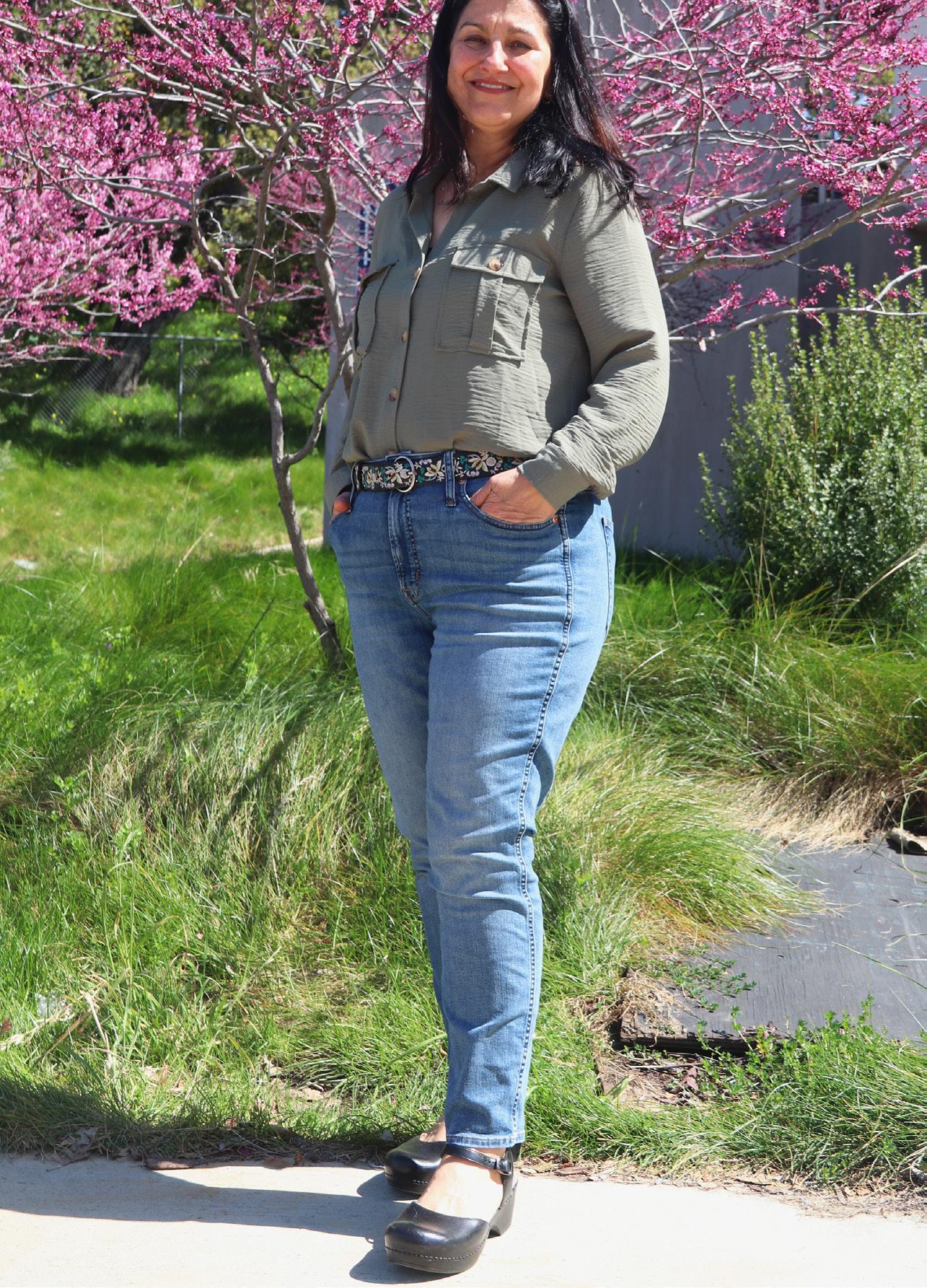
Sevgi Carefoot likes to keep clothes that are sentimental to her and gravitates towards comfortability when choosing her outfits. “What you wear just has to be meaningful for you,” Carefoot said. “I had a beautiful maternity dress my mom bought for me, and I still wanted to wear it, so I repurposed it into a flowy skirt.” She finds that picking out an outfit according to how she feels is the key to feeling confident in her style.


A survey of 500 random Carlmont students on their cafeteria favorites and 50 on their fast food cravings
PIPER DIEHN
55% of students prefer pepperoni pizza over cheese pizza.


29
students' favorite fast food restaurant is In-N-Out Burger.
3
5
students' favorite fast food restaurant is McDonald’s.
students' favorite fast food restaurant is Taco Bell.
13
students' favorite fast food restaurant is Chick-fil-A.
56% of students would pick a spicy chicken sandwich over a cheeseburger for lunch.

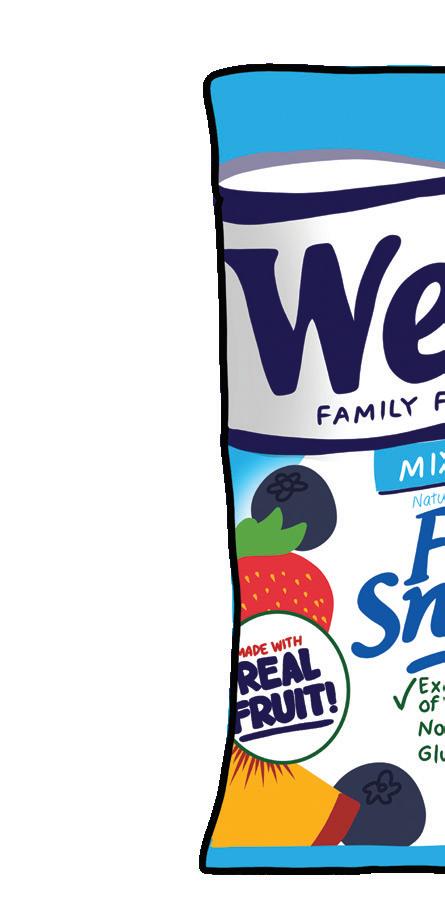

50%
of students would rather purchase two packs of Welch’s for 50¢ at the Student Store, while the other half would rather purchase one Fruit by the Foot for 50 cents.
Art by Shiyo Ohashi & Elizabeth Cruz


Puff sleeves, linen fabrics, and sun-kissed makeup are pillars of the tomato girl aesthetic. Popularized by the Mediterranean vacations of celebrities such as Sydney Sweeney and Gigi Hadid, the tomato girl aesthetic brings the luxury of a European vacation to the masses. This style is reminiscent of backyard garden parties and romance novels. The tomato girl aesthetic was made popular in the summer of 2023, with many influencers and social media personalities dubbing the season “Tomato Girl Summer” on social media. Whether intentionally aligning with tomato girl styling or not, linen fabrics and feminine silhouettes are finding a new spotlight with fashion influencers.


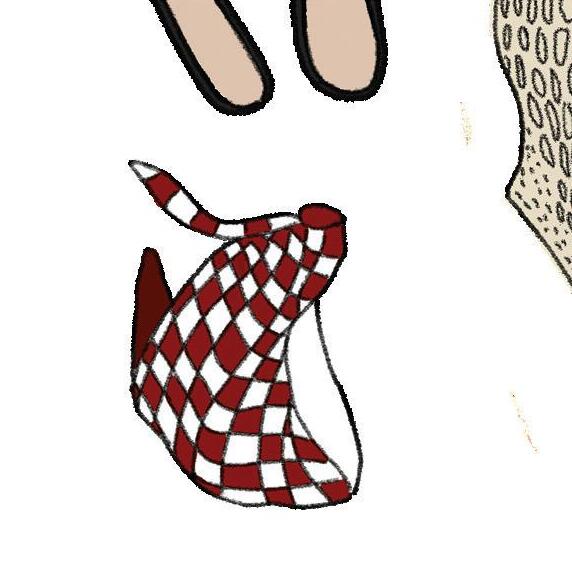
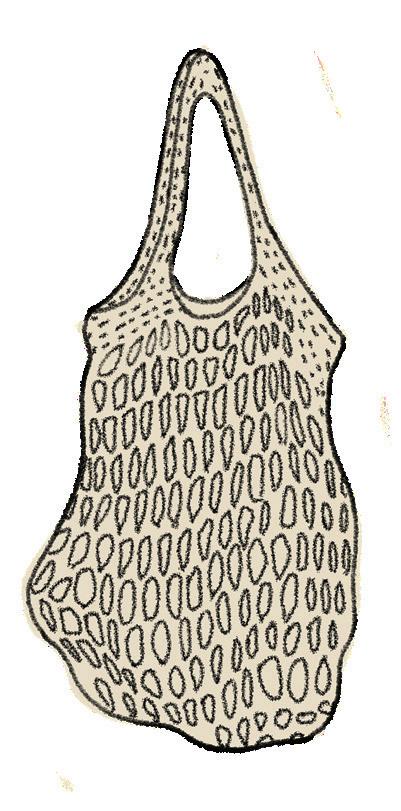
At first glance, the cottagecore aesthetic consists of ruffled dresses, floral wallpaper, and ribbon bows. But the trendy style is indicative of a return to a simpler time. A nod to the English countryside, cottagecore activities include baking, gardening, and frolicking outdoors. Cottagecore emphasizes finding joy in simple tasks that are often written off as mundane. The cottagecore aesthetic was popularized on TikTok in the months following the COVID-19 pandemic. Many embraced the aesthetic as a way to reconnect with nature and simplicity without relying on technology. Cottagecore also became synonymous with a revival of social events, including backyard tea parties and picnics on vintage quilts.
Heavily popularized by fashion influencers on Instagram and TikTok, the mob wife aesthetic is a modern take on the traditional femme fatale trope. Consisting of dramatic drapings such as fur coats, dark eye makeup, and stark red lipstick, the mob wife aesthetic sharply contrasts the trend of girlish styling that has maintained popularity with aesthetics such as cottagecore. Instead of frilly skirts and ribbon bows, the mob wife aesthetic leans into a more mature version of femininity, often recognizable with oversized sunglasses and heavy jewelry. Many attribute the popularity of the aesthetic to nostalgia for crime shows such as “The Sopranos,” while others simply love the bold fashion choices associated with the style.







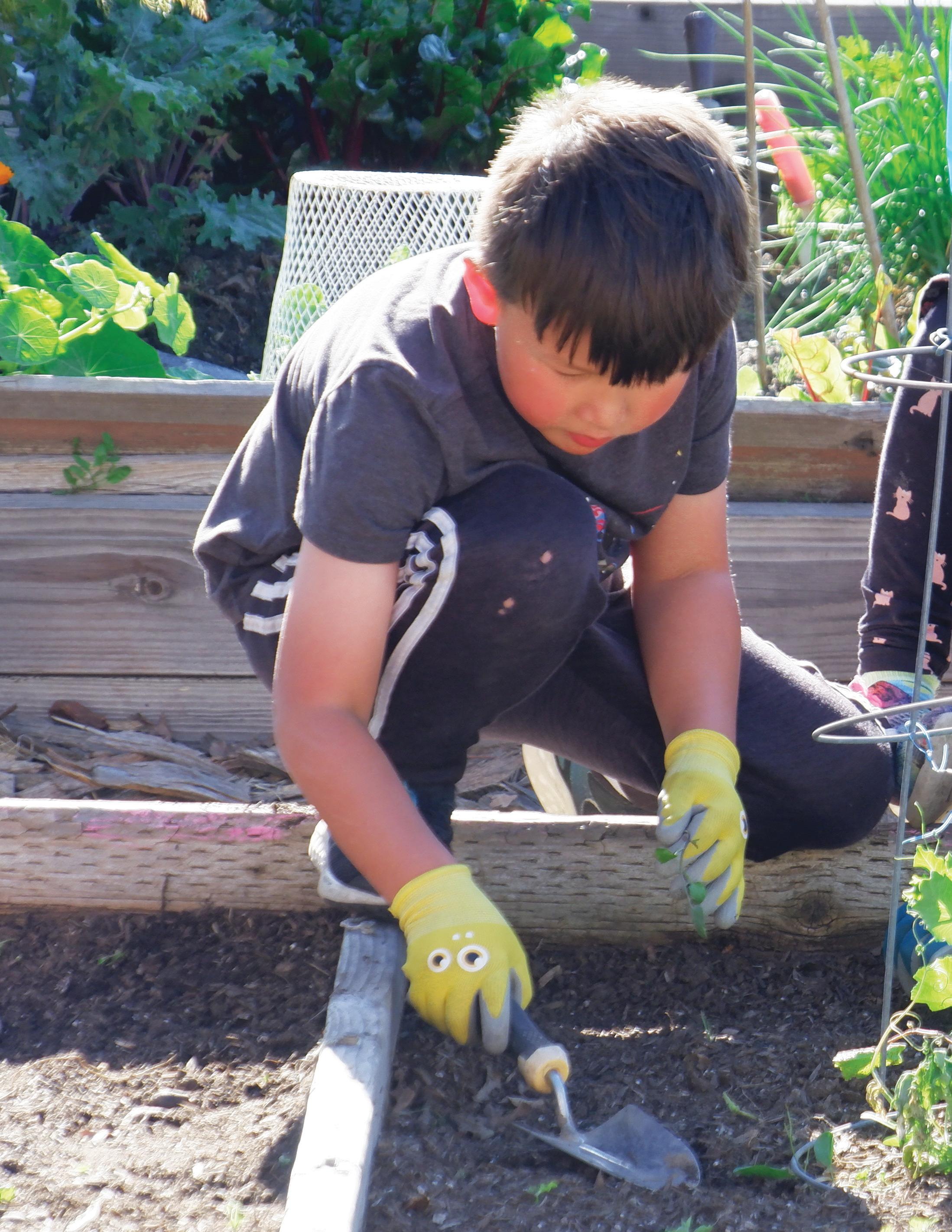
San Francisco skylines blossom into a harvest haven
Photos by Aimee Teyssier ARIANNA ZHU
ARIANNA ZHU
At first glance, most cities appear devoid of color and life, a true “concrete jungle.” Little do people know that hidden at the top of many of these buildings are sprawling gardens and greenscapes.
“Urban farms and gardens are really important when it comes to both creating food and creating connections,” said Alessandro Ossola, an assistant professor in plant sciences at the University of California, Davis.
Urban farming, or vertical agriculture, has become more prevalent in cities for a couple of reasons.
According to the U.S. Department of Agriculture (USDA), increasing city vegetation can help combat the urban heat island effect, a phenomenon where cities are warmer than surrounding rural areas. Consequently, urban farms also play a part in fixing the climate crisis.
Aside from environmental benefits, urban agriculture has been helping city food insecurity. In a 2021 study by the University of California, Los Angeles, 39% of Californian adults could not afford enough food to sustain themselves.
“There is a lot of terrible food insecurity in Los Angeles, just like there is throughout California and throughout the United States, which is strange because the U.S. produces so many calories every year. Urban farms would help us at least make a dent in our high food insecurity numbers,” said Aaron Fox, an associate professor of urban and community agriculture at California State Polytechnic University, Pomona.
Additionally, urban farms also help foster a stronger sense of community among those who frequent the farms. Because many city farms are dependent on volunteers, people get to connect as they lend a helping hand.
“Urban farmers who are connected to their communities grow the produce that people actually want to eat; this often includes crops like callaloo or okra or sour leaf which might be hard to find or afford in local grocery stores,” said Sara Shostak, a professor of Sociology and Health: Science, Society, and Policy at Brandeis University.
2 3 4
According to the United States Department of Agriculture

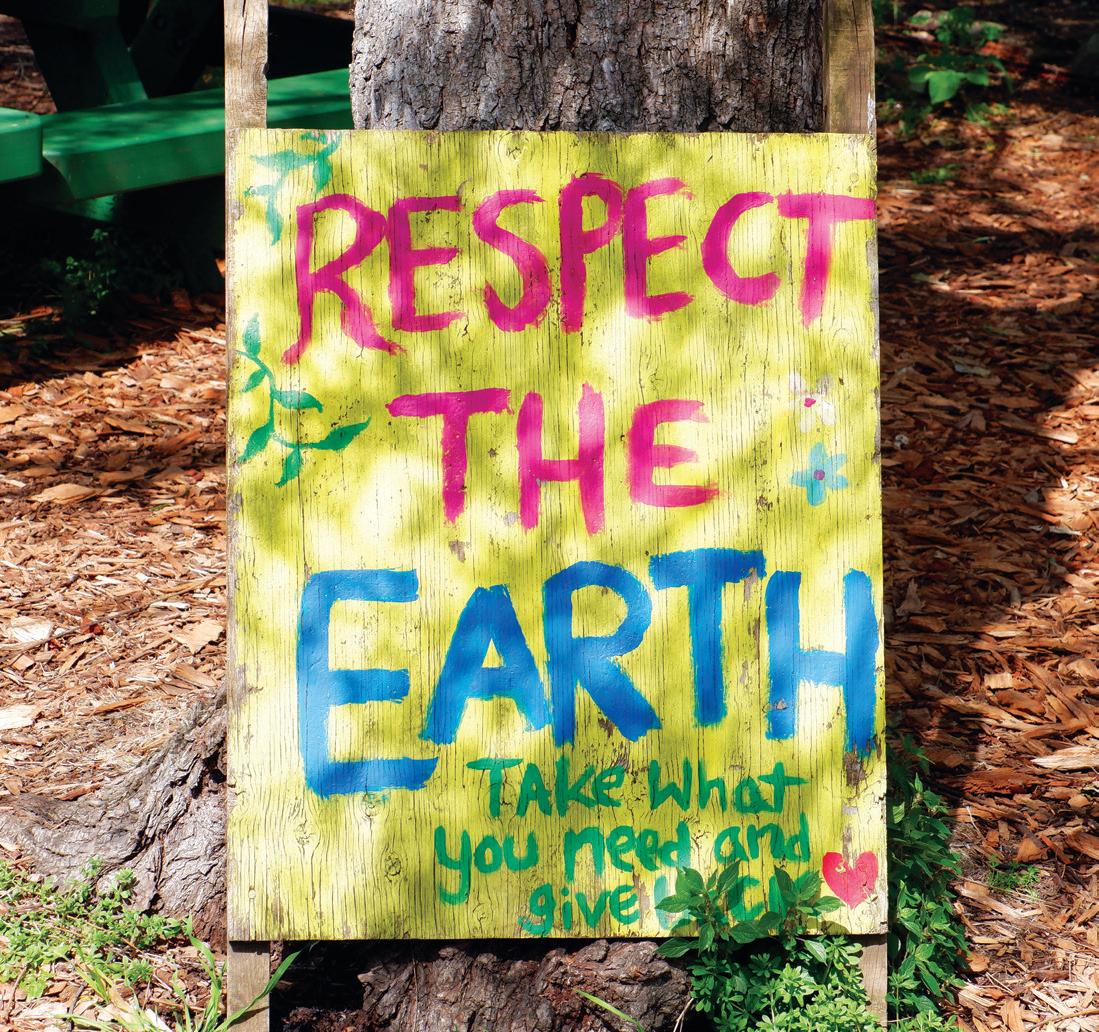


On a mission to protect California’s native plants, signs are placed around the Alemany Farm garden to inform visitors and to divide crops. The accessibility of the garden makes it a resource for anyone, and its organized state makes it easy to obtain as much as possible from what is available. The community garden relies on the public to tend and care for the crops, yet it is also meant to be used and provide back to the community, hence the motto “Respect the Earth, take what you need and give back” featured on the signs.
Around 12.5% of U.S. households in urban areas were food insecure in 2022, according to the Food Research & Action Center. Adopting sustainable urban agriculture could help ensure that families have access to an affordable and consistent food source in their communities.
“Urban farmers can grow thousands of pounds of produce, even in small acreages and sometimes in shipping containers. Many urban farms are also located in neighborhoods that don't have any grocery stores, which makes their farm stores and markets an important part of improving food security and advancing food justice,” Shostak said.
According to research from the University of Sheffield, with 10% of a city’s green spaces and gardens, 15% of the local population could be provided with five portions of fruit or vegetables per day. As such, increased support for urban agriculture is beginning to emerge, with the USDA investing $14.2 million toward urban farms in October 2022.
“In Los Angeles, there's been a lot of support for the urban food system. The county had a list of sustainability goals, and one of them was to have an equitable food system, and urban agriculture can be a part of that. There's the Food Policy Council and a lot of different organizations that are looking for ways to make our food system more fair,” Fox said.
Regarding the benefits of urban agriculture for the environment, opinions are more divided. According to the USDA, urban farms can help reduce carbon emissions because transporting foods grown in or near cities takes less mileage than transporting foods grown
"We can create a future where our buildings are greener, more sustainable, and actually nurture us."
ALESS ANDRO OSSOLA, PROFESSOR
in rural areas.
“If you produce your own food in your local community garden or your backyard, that food has a very tiny carbon footprint compared to, for example, an avocado that comes from South America,” Ossola said.
On the other hand, converting all city green spaces into farms is not a feasible solution when it comes to the amount of labor needed to maintain these spaces.
“There are a lot of people who would say, ‘No, all the trees need to be fruit trees.’ But then there's the question of, ‘Who's going to harvest that fruit? Who's going to bring that fruit to people that need it?’ Not to say that there's no place for urban agriculture, but I would say that it's not going to be the thing that solves all our climate problems,” Fox said.
Furthermore, despite government funds and tax dollars going toward urban farms, urban farmers do not have the economic resources they need to survive.
“In my time as an urban agriculture expert and advisor, I've seen a lot of urban farms come and go, and it's typically not because they don't know how to grow food. They simply can't make it work from an economic standpoint,” Fox said.
In addition to the struggles urban farmers face when it comes to their earnings, increasingly louder calls for them to adopt more sustainable practices have put more economic strain on them. While ensuring that urban farming practices are environmentally friendly is important, it is often an unrealistic demand for the already-strained farmers.
“There are also environmental

practices that urban farmers could be adopting that would be more environmentally beneficial, but they're often more costly. They take more money, and they take more time. There’s this saying that farmers work 36 hours a day and eight days a week, which isn’t much of an exaggeration, so asking them to put in the time to adopt environmentally-friendly practices is unfair to them,” Fox said.
A potential solution to this issue could be community gardens. Unlike urban farms, community gardens rely almost entirely on the work of residents. These can include gardens on the tops of apartment complexes or local plots of land for community members to plant seeds in.
“One way to try to maximize the environmental benefits of this food production system is adding people working in a collaborative fashion. If there is a surplus of food from one plot, having a trading system where we can minimize the amount of waste we're producing would be even better in terms of environmental benefits,” Ossola said.
The catch for community gardens, though, is the dedication of those who use them. Because there would be no designated farmer getting paid to work the land, whether
or not the plants live is up to community members.
“When there are community gardens with loose regulations, people get busy and forget to take care of their plants. Then, the whole garden just goes kind of nuts; it’ll get covered in weeds and all the crops end up dying, and it turns into a mess,” Fox said.
However, although urban agriculture does have its fair share of issues, that does not mean it should be written off; it means that policymakers, community members, and scientists should have serious talks about what the best course of action should be.
“We can create a future where our buildings are greener, more sustainable, and actually nurture us. The future is green,” Ossola said.
Urban agriculture has the potential to grow into a solution that can help combat food insecurity and climate change. The seeds have been planted. Now, they just need to be watered.

As the urban farming industry continues to thrive, food isn't the only thing being grown. Through working hand-in-hand to dig, sow, and harvest crops, this type of agriculture fosters deep connections among community members. Urban farms and communal gardens also provide people with the opportunity to get involved and do their part for their community.
“Urban farming opportunities are super important for residents of all cities. It can give people the chance to partake in activities, such as gardening, that they may not be able to do at their own home if they live in an apartment or somewhere else where they do not have easy access to such opportunities," said AnnMarie Garcia, an administrative assistant for the City of Belmont Parks and Recreation department.
According to the Appropriate Technology Transfer for Rural Agriculture (ATTRA) Urban Agriculture Nationwide Survey, there are 314 urban farms across the United States. Since urban farms reside close to urban cities, they provide a door to a world of nature.
Garcia also believes that communal upkeep of urban gardens can help motivate the broader community to indulge in nature and invest more of their time in outdoor activities.
"Giving people the opportunity to enjoy nature in so many ways, like gardening, hiking, etc., and making it as accessible as possible allows them to feel like it is always an option for them and they can enjoy it whenever feels right for them. It also allows them to feel more in touch with the city as a whole," Garcia said.
In addition, through growing plants and produce together, community
Above the Salesforce Tower in San Francisco lies the Salesforce Park. Used as a getaway for employees from a variety of companies nearby, as a tourist attraction, and even as a meet-up location for locals, this nature rooftop is the epitome of an urban garden. With numerous signs explaining the origin of plants and their biological details, the park stretches over nearly four blocks or 5.4 acres. It is home to 600 trees, 16,000 plants, and a linear fountain, all of which are open to the public.
members get to learn where their produce comes from and bond through the realization of what they have created.
"Visiting an urban farm can be a good way to get to know how your food is being produced and become familiar with the growth process to better appreciate the work of farmers and the importance of greenery, especially when it's not always very visible in cities," said Natalie Su, the co-president of Carlmont High School's Green Team.
According to the USDA, urban agriculture and farming contributes to 15-20% of the global food supply. Primarily, this type of agriculture provides fresh produce for local communities which can help reduce food insecurity.
Urban farms even have benefits in regards to education, through teaching children about agriculture and its
sciences. In addition, by learning and volunteering at urban farms, kids can learn how to service themselves and their community.
"In the past, we have had a few gardening classes/camps geared towards youth, run by our recreation specialist. Participants got to learn about soil, gardening tools, the best time of year to plant certain seeds, and other gardening-related topics. They then used what they learned to plant some items, care for them, harvest them, and enjoy them when it was time. Every child has the right to experience nature no matter where they reside," Garcia said.
Furthermore, the bonds formed through the development of urban farms can motivate community members to take initiave and contribute to their community in other ways as well. Dr. Aaron Fox, an associate professor of urban and community agriculture at California State Polytechnic University, Pomona, enjoys doing his part by donating food to the California Polytechnic State University food pantry through the Farm to Pantry program.
At the Barrett Community Center’s community garden, a group of four children and one supervising adult tend to the plants. Pulling up onions from the soil and picking pieces of rosemary from the bushes, they are able to take home little agricultural treasures found in the garden. Within the Footsteps educational program, the children are accompanied to the garden if they enjoy it or find it relaxing. The community garden is not only a place for those who enjoy gardening or wish to pick up some plants, for these kids, it is also a place to relax and disconnect from stress through outdoor activities.
"In that program, we have grown over 4,000 pounds of fruits and vegetables and donated it to the food pantry. Honestly, that's a really good accomplishment," Fox said.
Fox emphasizes that for urban farming to thrive, it would require the full collaboration of community members with equal representation from all groups, noting that only by communicating with each other can we know what is needed for the community.
"Urban agriculture will be an important contribution to our food system and finding a sustainable future. The most important thing is to make sure that everybody has a seat at the table. We need to make sure the people we're trying to help get a chance to say what they want and need," Fox said.
In pursuit of equal representation and communication across members of the community, urban farms and agricultural programs have provided community members with education and employment opportunities, allowing the diverse representation Fox advocates for.
"Many urban farming organizations also have education and employment programs for aspiring farmers, local youth, and community members. I am always impressed by how much community-based urban farming organizations are doing to advance racial justice, health equity, and environmental sustainability," Shostak said.
Moreover, as urban farming continues to grow and take its roots, unity and collaboration among its surrounding communities will also grow and flourish.
"Some people will ask me why I'm doing this, and I think one of the big motivators is that we are creating a community of care. We're aware that there are individuals in our community that need support. Ultimately, at some point or another, every single one of us will need help. Any opportunity we have to build community and come together has huge benefits," Fox said.
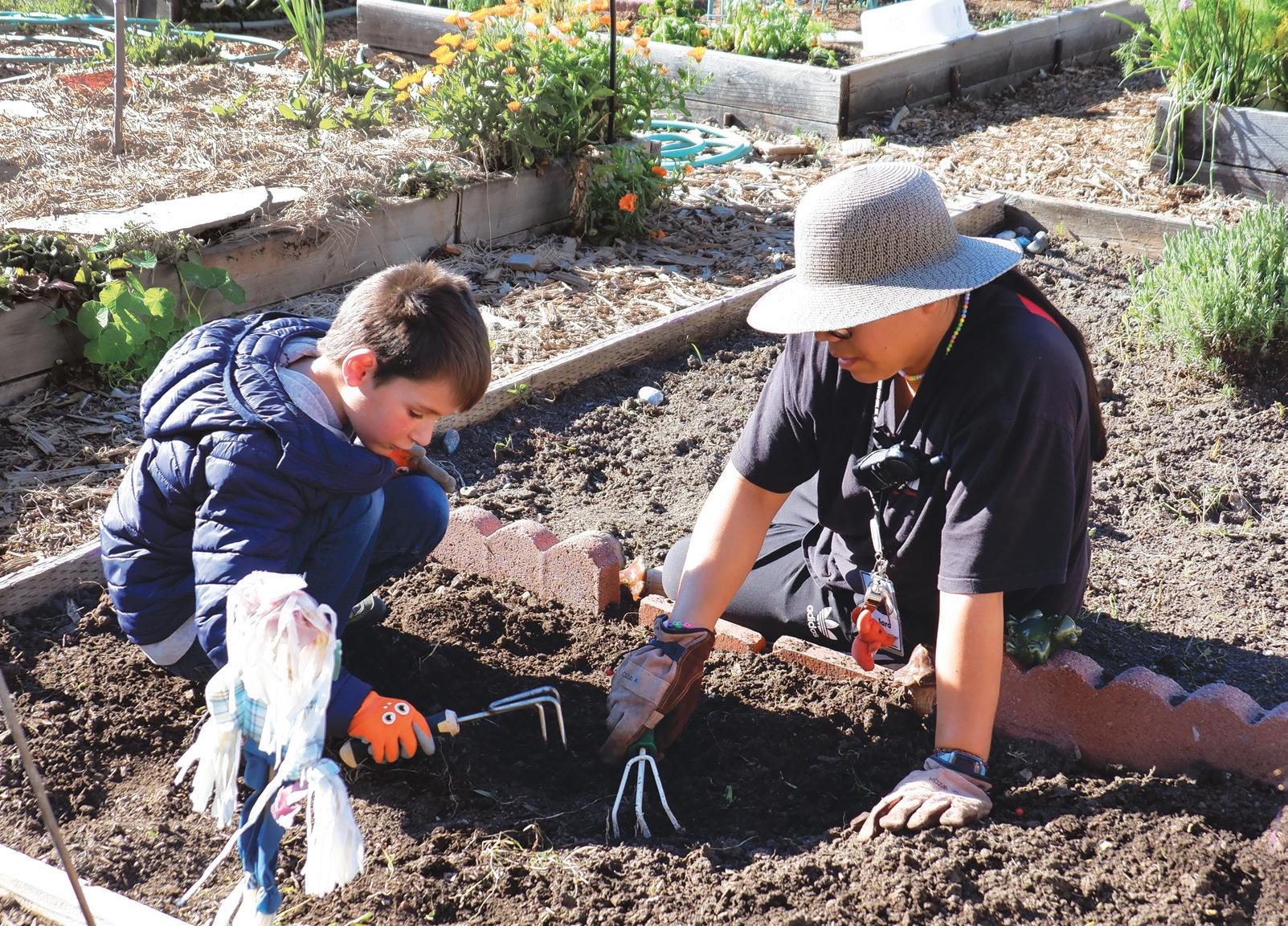

While the housing crisis continues to disrupt lowincome families, affordable housing apartments in the Bay Area are now displacing many historical locales. Instead of building more high-rises in suburban communities, we should promote alternative living styles, like van, trailer, and tiny home living.
Over the years, affordable housing has continued to gain traction as a prominent issue plaguing society, due to the continually rising homeless and lowincome populations. As a result, local governments have tried to counteract this by administering the construction of new residential buildings under the “affordable housing” banner, deemed affordable if rent and utilities cost no more than 30% of a household’s monthly income.
In the Bay Area, where housing has always been among the most expensive in the country, prices have increasingly risen, with 95% of area codes becoming less affordable for prospective homebuyers since the start of the COVID-19 pandemic, according to Bay Area Equity Atlas. However, our local county governments still face two major challenges when tackling affordable housing: thousands more units need to be built, and current construction plans are shutting down historical centers.
First, according to NBC Bay Area, 180,000 more housing units are needed by 2031 to resolve the area’s housing crisis.
Secondly, in the next few years, many historical locales in the region will shut down or close to pave the way for affordable housing. These include California’s Great America in Santa Clara, Tanforan Mall in San Bruno, and People’s Park in Berkeley, which has recently been the subject of controversy when UC Berkeley seized the area, a public park since the 1970s, and walled it off with shipping containers in early January. According to Scot Scoop, five local businesses in the Belmont Town Center strip mall will soon be forced to shut down due to new housing development proposals, drawing the ire of local residents and sparking the Save East Belmont movement.
While more affordable housing is a necessity as the housing crisis inevitably continues, forcing local businesses and historical locales to shut down should be not the consequence of building new homes. One solution is to pursue alternative living situations, such as living in a van, trailer (RV), or tiny house. While many

people used to associate these living situations with being lower-income, in recent years alternative housing has grown in popularity as people are attracted by its lower costs.
The green design website, Inhabitat, reports that alternative housing typically costs between $70,000 and $90,000, significantly lower than the average home price in the U.S. of over $400,000. In addition to lower home prices, alternative housing is desirable due to a greater sense of freedom, having everything in one place, and owning a space that is customizable. While some people may be reluctant due to the smaller amount of living space and the stigma surrounding living in a vehicle, living in a van, RV, or tiny house is a favorable alternative option for members of the low-income community who are hoping to capitalize on affordable housing.
Due to the numerous advantages of alternative housing, it would be beneficial for local governments to promote these living situations so that low-income families can save money without further causing the foreclosure of historical Bay Area landmarks and businesses.

$70,000-$90,000
$400,000
Art by Shiyo Ohashi
Commonly celebrated in the United States with margaritas and tacos, Cinco de Mayo has evolved into a celebration more commonly associated with sombreros and partying.
Cinco de Mayo, or the fifth of May, commemorates the Mexican army's victory over France on May 5, 1862, at the Battle of Puebla, which took place during the Franco-Mexican War.
According to Brittanica, unlike Mexican Independence Day, Cinco de Mayo is not recognized as a federal holiday in Mexico. For the most part, only the state of Puebla, the location of the famous battle, celebrates Cinco de Mayo. The more traditional festivities in the state of Puebla include parades and reenactments of the battle to honor the courage and sacrifice of the Mexican soldiers.
Most Americans are unaware that Cinco de Mayo commemorates a battle. According to a survey by National Today, only 10% of Americans know the actual significance of the holiday. Given the few Americans who know what Cinco de Mayo is, there's a pressing concern regarding the pervasive appropriation of the holiday.
Despite not knowing Cinco de Mayo’s significance, according to the Washington Post, more than 500 cities in the U.S. celebrate the day by throwing
parties. The largest celebration is in Los Angeles, which attracts more than 500,000 Americans to the site. The festivities often are filled with stereotypes of what a traditional Mexican party, or fiesta, “looks like.” Many Americans see a fiesta as an opportunity to drink margaritas or tequila shots while wearing sombreros and eating tacos. Some Americans go to the extent of putting on fake mustaches.
Since the event is widely observed as a celebration of Mexican culture and heritage, or so Americans think, there are many positive aspects to Cinco de Mayo’s popularity in the U.S. Today, people from all walks of life join together to celebrate with food, beverages, music, and dancing—all significant facets of American culture. However, the fact that Americans are contributing to the stereotypes of a Mexican holiday is far more concerning than a fun day full of partying.
Americanized Cinco de Mayo celebrations highlight Americans' naivety regarding their unfamiliarity with the richness of Mexican culture. Mexican heritage is way more than a couple of tacos and margaritas. For example, according to The Mexico City Government, on Mexican Independence Day, citizens join together to participate in “El Grito,” or “The Cry.” The most significant commemoration of the event is in El
Art by Emma YinZócalo, the main square in Mexico City. Led by the Mexican President, Mexican citizens join together to reenact Miguel Hidalgo’s “Cry of Dolores,” signaling to Mexico the end of Spanish rule on Sep 16, 1810.
When Americans misinterpret the true meaning of Cinco de Mayo, like celebrating the holiday with stereotypical elements, it inadvertently reinforces stereotypes that show the depth of Mexican culture.
Americans need to approach Cinco de Mayo with cultural sensitivity and understanding, moving away from the current Americanized celebrations that perpetuate stereotypes about Mexican culture.
By fostering a more respectful and authentic appreciation for the significance of the holiday, starting with the history and the traditional celebrations in Puebla, Americans can contribute to a positive exchange of cultural experiences that is not culturally appropriating the Mexican culture.


Despite complaints about recent horrible sequels, people tend to overlook the worst one yet: 2024. Someone get Disney on the case because 2024 has definitely been the worst remix of 2020.
From cheatergate with Ariana Grande (feat. Broadway Spongebob) to another year of Russia being a hater — this year has been both the most and least historic year in the books. Call me Olivia Rodrigo because I am getting major “deja vu.”
2020 started strong with the United States involving itself in a gazillion political conflicts that could’ve been emails. Their biggest international faux pas was arguably getting into it with Iran after accidentally killing the Iranian major general, Qasem Soleimani. However, after finally cooling tensions in 2023, worry not-- Iran still hates us. Thanks to the Israel-Palestine conflict, the US-Iran hatefest is still going strong.
the 2020 presidential election ballots because voters will once again have to play the game of “Who is least likely to drop dead in office?”
On the topic of presidential candidates: Donald “Just-build-thewall-already” Trump is going strong in the polls. I can’t say the same for him in court. In 2020, Trump was being tried for impeachment on the grounds of abuse of power. Now, he’s in court for every crime imaginable except the ones that actually matter. If he wins the 2024 election, we know who his first presidential pardon will be!
I am not sure what Trump would do if
become a Kelce after his team’s Super Bowl win. All fans got, however, was live footage of Taylor getting the biggest ick as her boyfriend belched, “Viva Las Vegas!” thrice into the silent abyss. However, engagement rumors aren’t a new occurrence for the popstar; in 2020, Swift broke the internet after posting a preview of her re-recorded version of “Love Story” which sent the media into a frenzy, sparking months of engagement rumors about Swift and her now exboyfriend, Joe Alwyn.

While I may not be a Swift expert, you can always catch the latest scoop on socials. Oh, wait … you can’t. It turns out that the U.S. government has genuinely run out of problems to solve. Forget the thousands of wars we’re in, or the trillions of dollars of debt to pay off. Our most pressing issue is … social media.
Speaking of Iran, guess who is running for president? Your ballots are going to look eerily similar to those of
he managed to lose again to a man who can barely string together a sentence. It would be a defeat as bad as the 49ers suffered from the Kansas City Chiefs in 2020… and in 2024. The only historic thing about this year’s Super Bowl was that Taylor Swift got more screen time than the players did.
Swift is happy and well with her new breakup song muse Travis Kelce, and the internet couldn’t be happier. Folks were gambling their savings away on the rumor that Swift would swiftly
In 2020, Meta’s CEO, Mark Zuckerberg was called to testify to Congress regarding the selling of user data and private information to third parties. Lo and behold, the United States Congress has made their priorities abundantly clear in 2024 as they have found a new victim: Tiktok.
Of all the years to replay, why did the universe choose 2020?
Art by Shiyo Ohashi JASNEH SASAN







The Tin How Temple is the oldest surviving Taoist temple in San Francisco. Located in Chinatown, it has been welcoming worshipers since 1852. The temple is dedicated to the Chinese sea goddess Mazu in recognition of her blessing to early Chinese immigrants coming to the United States.
“Everyone seemed to know each other in Chinatown. It was a community where people lived, worked, shopped, and worshiped,” said Dr. Mike Fong, a former resident of Chinatown. Photo by Kian Bhatt
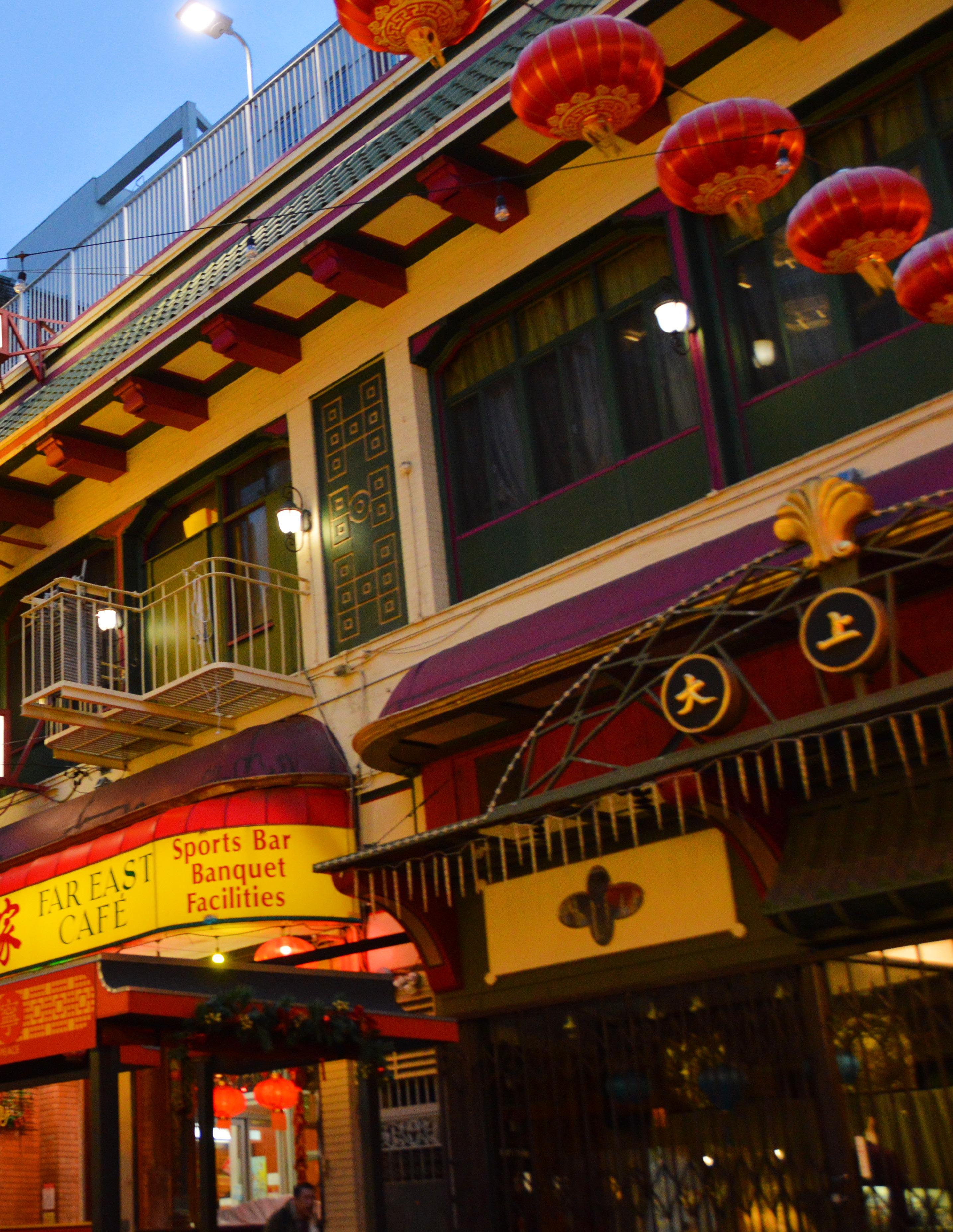
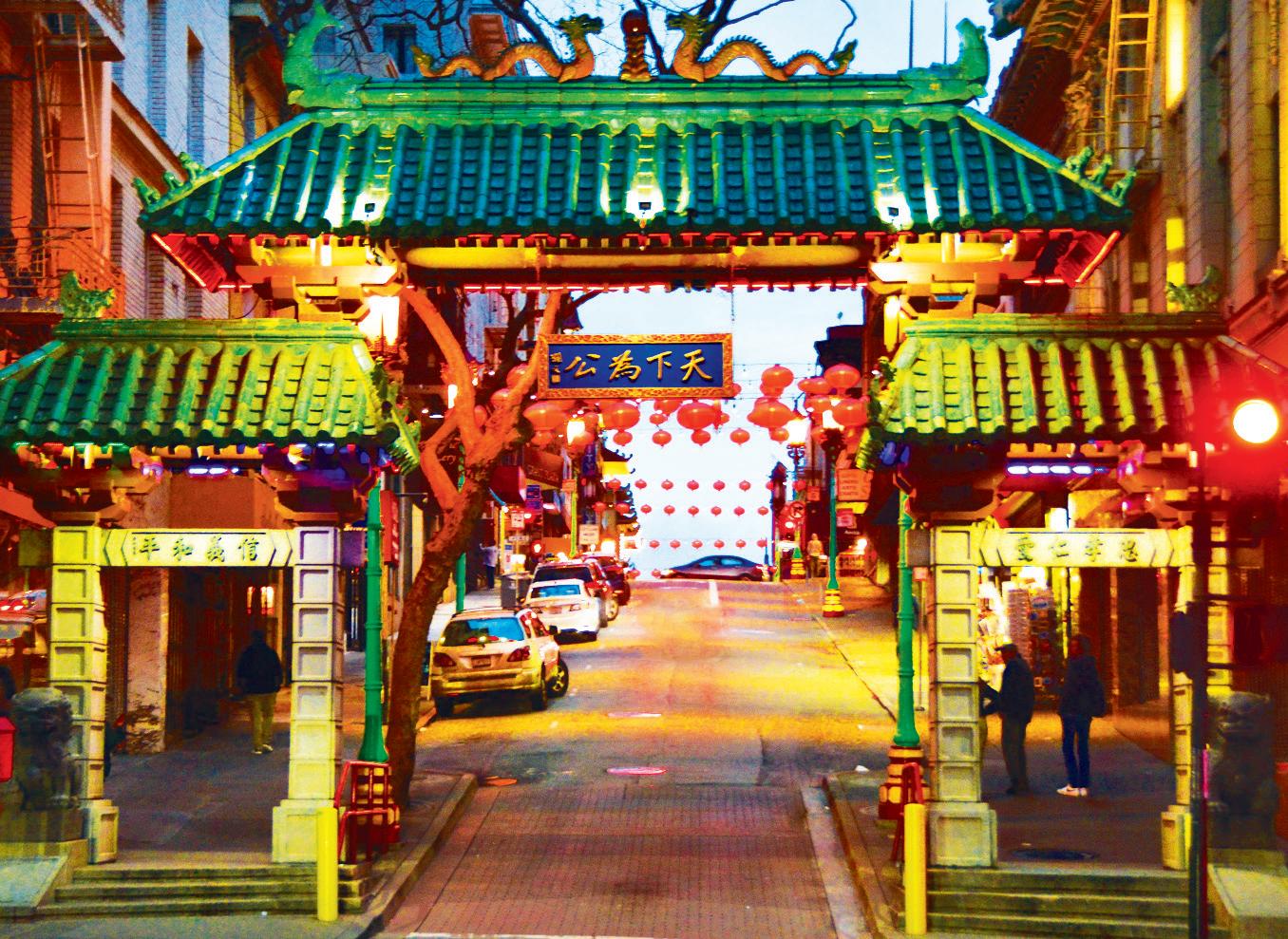
San Francisco’s Chinatown has its origins dating back to the 1850s. Angel Island in San Francisco Bay was the port for many early Chinese immigrants who began to settle around Portsmouth Square, which is still the center of Chinatown today.
Many Chinese immigrants came to San Francisco because, despite its flaws, it was still the safest place for them in America.
“The Chinese were driven out of about 200 cities in the American West between 1870 and 1890, so the Chinese ended up in San Francisco for self-preservation,” said David Lei, a Chinese Historical Society of America board member.
Several factors contributed to the creation of this ethnic enclave. One factor would be that new immigrants from China cared to be around people who shared the same language or cultural values, so Chinatown was appealing in that way.
Also, because it was near the city’s center, Chinatown was the perfect place for Chinese immigrants to set up their businesses. Laundromats were extremely popular businesses for Chinese immigrants because the miners in San Francisco were looking for gold and needed people to wash their clothes. According to the Public Broadcasting
Service (PBS), there were 2,000 Chinese laundries by 1870 and 7,500 in 1880.
Another reason for the formation of Chinatown was governmental policies and restrictions. The San Francisco government only allowed Chinese immigrants to own property in Chinatown to keep Chinese immigrants from establishing themselves in other parts of the city.
In addition to the ill intent of its creation by the government, Chinatown was also riddled with problems: substandard buildings, overcrowding, and disease.
For years after the Chinese immigrants first settled in Chinatown, there were no rules for living space conditions. According to PBS, this was until 1870 when the Cubic Air Ordinance prohibited the rental of rooms with less than 500 cubic feet of air per person.
The overcrowding in Chinatown was the natural effect of keeping every Chinese immigrant in San Francisco in only 12 city blocks. This pattern has continued to this day, with the San Francisco Planning Department reporting that Chinatown is the most densely populated urban area west of Manhattan.
With overcrowding comes the spread of disease. According to History, a smallpox epidemic in the 1870s led to the fumigation of every residence in Chinatown.
Families lived — and still live — in single-room occupancies (SROs) run by Chinese families and organizations.
The SROs have a communal bathroom and kitchen on each floor and many single-room dwellings. Families rent a single room for sleeping, eating, and gathering.
“You can rent them for $1,000 per month to get started. It’s not ideal, but you can put a roof over your family’s head,” Lei said.
Despite its unfortunate beginnings, Chinatown has transformed over the years — starting with the onset of World War II.
With many Americans’ eyes turned toward the Japanese immigrants in America after the bombing of Pearl Harbor, Chinese immigrants were often ignored during this period.
While at first seeming like a bad thing, it was better than the previous realities of racial discrimination. The Chinese were now able to serve in the American military alongside white soldiers, and their overall position in society was lifted as a result of America allying with China during the war.
Chinatown also began to flourish as a tourist attraction for many white Americans. Chinatown provided Americans with a small amount of cultural exposure that was extremely enticing to many.
Chinese shops and restaurants benefitted from the tourism of the 20th century. Chinatown had revolutionized from a collection of rundown city blocks to become a cultural beacon.
Today, Chinatown continues to stay relatively homogenous. A 2018 San Francisco Planning Department study estimated that 81% of Chinatown residents are Asian.
Chinatown is also the home of Chinese Hospital. This hospital is designed specifically to suit the needs of Chinese Americans, with plenty of language services and an easily
accessible location in Chinatown.
“Most of our providers and employees are multilingual, and we also have interpreting services,” said the CEO of Chinese Hospital, Dr. Jian Zhang.
Chinese Hospital has been serving the Chinese community for over 125 years.
“It's really important to provide culturally and linguistically appropriate care, especially during the public health crisis,” Dr. Zhang said. “We're out there protecting and safeguarding our community.”
San Francisco’s Chinatown is one of the few Chinatowns left in America. According to PBS, Chinatown is also not the major residential area for Chinese residents. Because of its limited growth capacity, Chinese communities have also begun forming in the Sunset and Richmond districts of San Francisco.
Despite the resident diaspora from Chinatown, it remains a vibrant cultural center. Countless festivals and parades occur throughout the year. Lunar New Year is an especially lively time in Chinatown; residents and tourists alike gather to watch the performers in Portsmouth Square.
In recent years, many buildings in Chinatown have become decorated with large murals. Betty Louie owns several of the mural-covered buildings in the heart of Chinatown.
One day, while walking down the street, she saw a man painting a mural. She told him it was pointless because it would get tagged by vandals, but he insisted that his art never gets tagged. She then commissioned him to paint several murals on her buildings.
“I thought that art would be a way of drawing people into Chinatown and cleaning it up,” Louie said.
According to Louie, the graffiti in Chinatown is almost all gone because there are so many murals covering the buildings. Additionally, the murals
commissioned by Louie bring tourists to Chinatown, helping the local shops and restaurants.
Chinatown has maintained many traditions through its festivals, institutions, and businesses in the neighborhood. Museums, community centers, and temples continue to preserve the culture of the earliest Chinese immigrants.
Chinatown today remains an ethnic enclave, but those words can be used as a term of endearment for the neighborhood's perseverance rather than a slight for its past troubles.
“Everybody knows everybody; it’s really nice,” Louie said. “It’s one of those communities where no one’s


Marvelous Nails & Spa is one of many Vietnamese nail salons in Belmont. Vietnamese entrepreneurs revolutionized the nail industry by offering discounted services that made nail salons more accessible, thus more popular among the public. Photos by Kian Bhatt
Disinfect. Trim and clip. Buff, shape, and file. Apply a base and top coat. Although manicures may seem trivial, the backbones of the nail industry — Vietnamese Americans — are often overlooked.
Nearly one-fifth of Vietnamese Americans work in personal care and services jobs, according to the Bureau of Labor Statistics. Although nail salons have existed since the late 1800s, their popularity took to new heights with an influx of Vietnamese immigrants to the United States in the 1970s.
Ha Nguyen was 2 when she and her mother left Vietnam for the U.S.
“We came to the U.S. in 1975. It was during the Vietnam War, and the communists had conquered Saigon, which is where I was born, so anybody who was fighting for the South Vietnamese Army had to flee. The American army helped me and my family out. We ended up in refugee camps and then we settled in rural
Pennsylvania, which is where I grew up,” Nguyen said.
Having fled rather abruptly, Nguyen and her mother, Hang-nga Cong-huyen, had to adjust to American life. Initially, Cong-huyen worked as a seamstress for nine years before developing back issues so severe her chiropractor advised her to change professions.
“She had all different kinds of businesses that she owned like an arcade store and a few restaurants. She started investing in real estate and it wasn’t until later that she started her first nail salon, Fancy Nails,” Nguyen said.
Similarly to other Vietnamese immigrants, the nail salon business was passed on through word-of-mouth in Cong-huyen’s family. After taking part in the business side of her brother’s salon, she finally decided to enter the industry herself. For one, she was drawn to the fact that it seemed a more enjoyable way to make money.
“I had worked hard for seven years
and finally heard about nails. My relatives did nails and looked like they succeeded, so I came ready to work hard, knowing it was an opportunity for me too. Compared with other jobs, I realized that at a nail salon, I could look nicer than a job at something like a factory, and also do services for people,”
Cong-huyen said.
Acquiring her nail technician license was fairly simple, as not only does the process take five to six months, but classes are also offered in Vietnamese and don’t require other education backgrounds, according to the Board of Barbering and Cosmetology. These factors render the profession more accessible, especially since only 54% of Vietnamese Americans are proficient in English, compared to 72% of all Asians in the U.S., according to Pew Research Center.
“It didn’t cost a lot to get started. She just had to go to classes, and she liked the idea of a cash business without needing an education. She saw
EMMA GOLDMANthat it was a rising business and took advantage of the opportunity,” Nguyen said.
Despite a fairly straightforward pathway, the profession didn’t come without its hardships.
“I was working 10 or 11 hours a day, seven days a week. I was working day and night and didn’t have time for my three children,” Cong-huyen said.
Nevertheless, as years went on, working as a nail technician also helped Cong-huyen in other regards.
“When your English is better, you can do everything in America better. It wasn’t easy, but you had a chance to talk to other people. For ten years, I didn’t know English — I wasn’t talking to anybody. But once I started doing nails, my English suddenly improved,” Conghuyen said.
Once a salon establishes itself, it can begin to build a consumer base to promote its success.
For Jayme Franklin, who regularly goes to the nail salon, getting manicures
is a way she treats herself.
“It is something extra that when I feel like other parts of my appearance maybe on a given day are not as well pulled together, that having clean, well shaped nails is at least one thing I don’t have to worry about,” Franklin said.
Franklin, a Belmont resident, goes to First Impressions of Belmont when she gets her manicures. She always chooses to work with the same nail technician.
“I go to the same salon primarily because I can develop a rapport with the technicians and staff to be able to communicate my likes and dislikes with them. I specifically request Julie because I know the quality, cleanliness, and creativity of her work,” Franklin said.
Thus, building up a loyal customer base can help to ensure salons’ long-term success. After becoming successful at the Fancy Nails’ original Hagerstown, Maryland location, Cong-huyen went on to open two other locations in Chambersburg,
Pennsylvania.
Although Cong-huyen has since retired and sold her three Fancy Nails locations, she continues to enjoy the community and work. Described by her daughter as a workaholic, she still goes into the salon three times a week to pick up work.
“It’s something to do to get out of the house. I get bored just staying inside all day. I like to work three days a week and then go do my other errands like grocery shopping. Having a fun creative outlet keeps me busy and going,” Cong-huyen said.
In spite of hardships and the commitment that comes along with it, involvement in the nail industry can still offer a gratifying and fulfilling experience.
“It’s a lucrative business. You have to learn the trade and the skills. But Vietnamese like it because they’re entrepreneurial and favor cash businesses. It’s a great way to make a living, even in a saturated market,” Nguyen said.
 Photos by Kian Bhatt
Photos by Kian Bhatt

